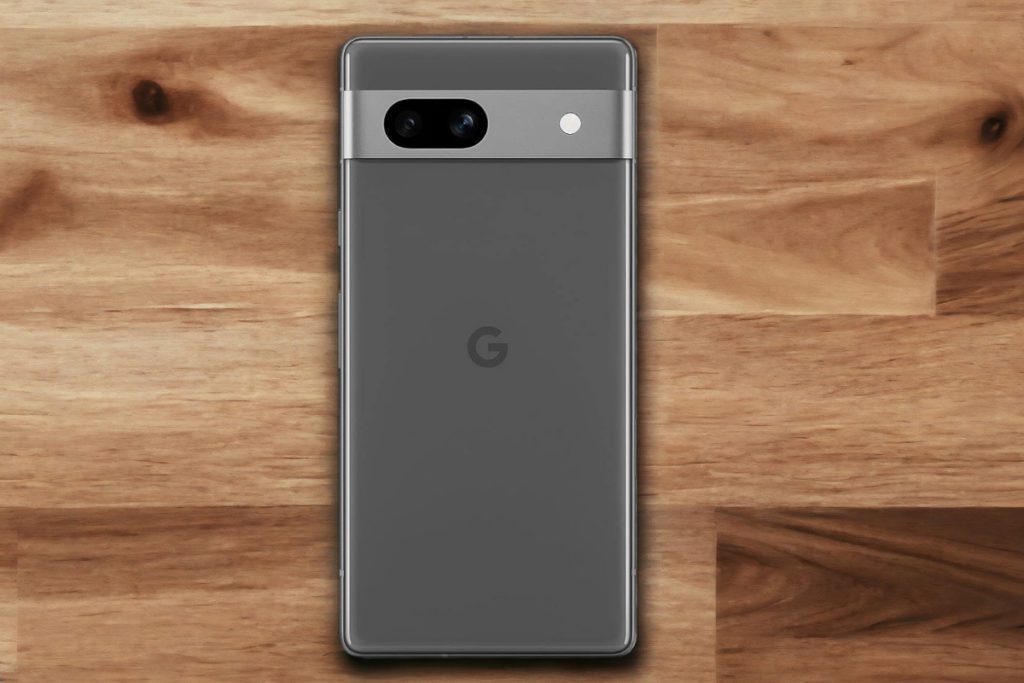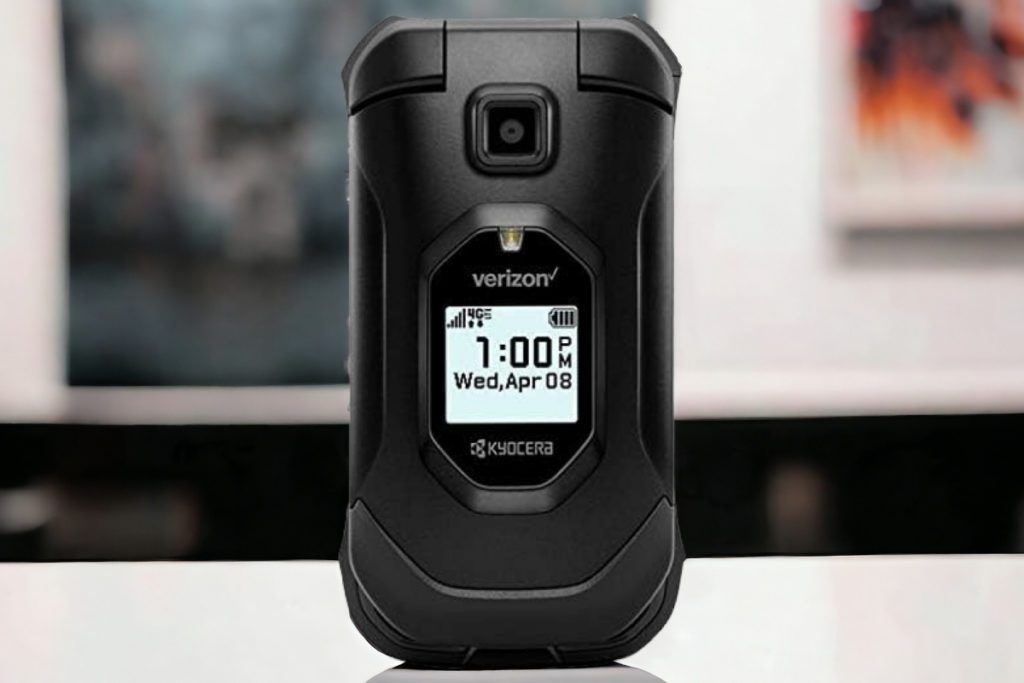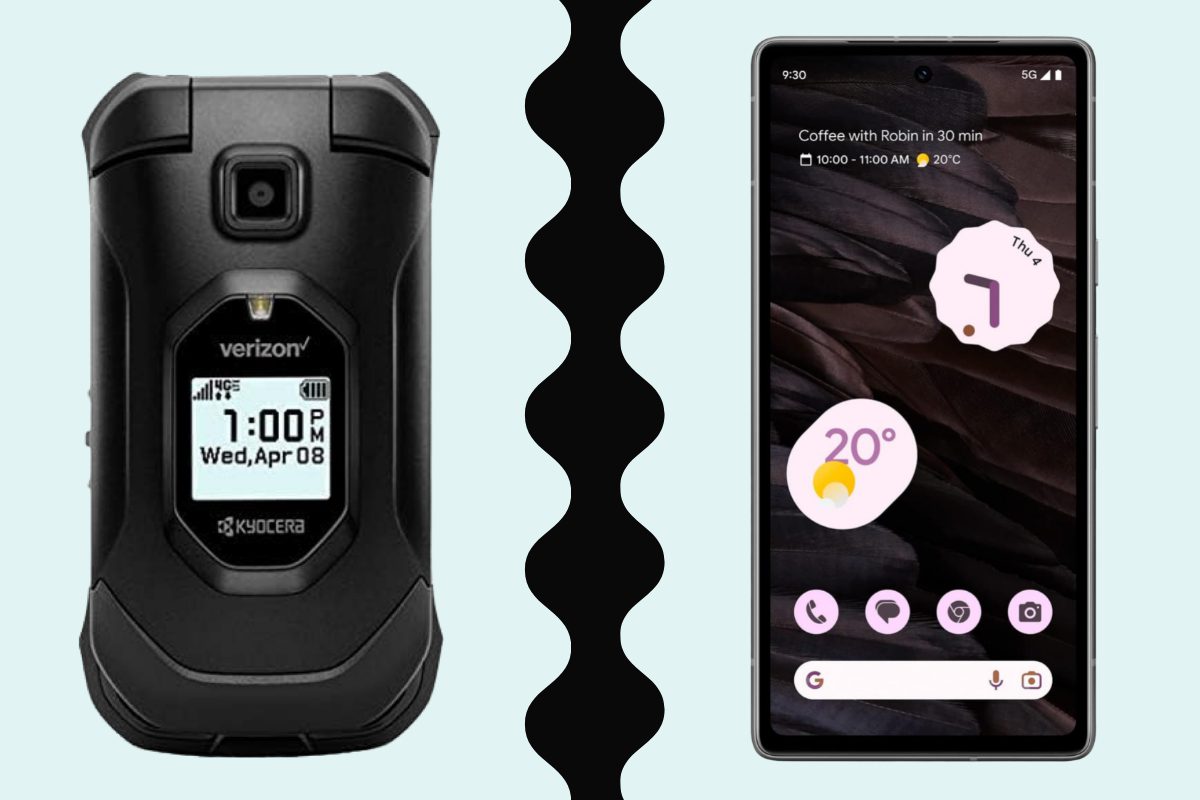Rugged Phones vs. Traditional Smartphones: Which Stands the Test of Toughness
When it comes to smartphones designed for tough environments, you have two main options – rugged phones or traditional consumer smartphones. But which truly stands up to the test of toughness when the going gets rough?
Rugged phones are built from the ground up to withstand harsh conditions like drops, vibrations, extreme temperatures, and wet environments. With reinforced cases, shatterproof screens, and waterproof designs, they are made for demanding outdoor jobs or adventure travel.
Meanwhile, traditional smartphones prioritise sleek and elegant designs using materials like glass and aluminium. They pack impressive tech specs but sacrifice resilience for aesthetics and compact size. Their fragility leaves them prone to cracking, water damage, or system failures when used in rough conditions.
This article compares rugged phones and traditional smartphones across five key factors – durability, water/dust protection, battery life, special features, and suitability for tough environments. After reading, you’ll have a clear sense of their relative strengths and which option offers the most ruggedness for challenging adventures or work sites.
Key Takeaways
- Rugged phones have heavily reinforced cases and shatterproof screens, allowing them to survive harsh drops and shocks that would crack most traditional smartphones.
- With IP68 or IP69K ratings, rugged devices can withstand total water submersion and dust ingress that would damage or turn off traditional consumer phones.
- Large batteries (8000+ mAh) allow rugged phones to operate for days without charging – which is crucial for off-grid use. Traditional smartphones have much more limited battery life.
- Rugged phones boast special features like loudspeakers, thermal imaging, and emergency beacons tailored for industrial and outdoor applications. Most traditional phones lack these capabilities.
Rugged phones, designed to endure harsh conditions with reinforced cases and waterproof features, outperform traditional smartphones in toughness, proving ideal for challenging environments. Traditional smartphones, while technologically advanced, prioritize aesthetics over durability, making them more susceptible to damage.
Related post to read: 15 Rugged Phones with Long Battery Life.
- Key Takeaways
- Rugged Phones vs. Traditional Smartphones Comparison
- Rugged Phone Durability vs Fragile Traditional Smartphones
- Water And Dust Resistance
- Battery Life And Charging
- Specialised Features
- Ruggedness Compared In Practice
- Rugged Phone Weaknesses
- Which Phone Is More Rugged?
- Final Thoughts
- Useful Links:
Rugged Phones vs. Traditional Smartphones Comparison
here is a comparison table contrasting some of the key differences between rugged phones and traditional smartphones:
| Feature | Rugged Phones | Traditional Smartphones |
| Durability | Reinforced cases, shatterproof screens withstand repeated 6 ft drops | Prone to cracks and dents from drops due to glass/aluminium bodies |
| Water & Dust Resistance | IP68 or IP69K ratings allow full water submersion without damage | Typically no IP rating or only basic splash resistance |
| Battery Life | 8000+ mAh batteries last days without charging | 3000-5000 mAh batteries require daily charging |
| Special Features | Loudspeakers, emergency beacons, thermal cameras, push-to-talk buttons | Focus more on consumer features like photography, gaming |
| Processing Power | Utilise mid-range processors that prioritise battery efficiency | Cutting-edge flagship silicon provides maximum performance |
| Display Quality | Lower-resolution screens with dated visuals but high visibility | Brilliant OLED displays with great colours but may lack outdoor visibility |
| Design & Aesthetics | Bulkier reinforced cases with industrial styling | Slim and sleek premium metal/glass styling and branding |
| Model Choice | Niche category with fewer annual device launches | New traditional smartphone models launch constantly |
This table summarises some of the major differences in terms of the durability, features, power, and design between heavy-duty rugged phones and more fragile yet performance-driven traditional consumer smartphones.
Their diverging capabilities make each category better suited to certain types of buyers and use case environments, depending on priorities. Use this comparison to decide whether rugged resilience or consumer-grade styling and horsepower is a better match for your needs!
So, now that the comparison table is out of the way, let’s get into more details and further insights.

Rugged Phone Durability vs Fragile Traditional Smartphones
When comparing the physical durability and resilience of rugged phones vs traditional smartphones, the differences are stark. Rugged phones are almost unanimously more durable across metrics like drop/shock protection, screen resilience, vibration resistance, and structural reinforcement.
Rugged Phone Toughness By Design
Constructed to thrive in harsh environments, rugged phones boast heavy-duty reinforced cases and shatterproof screens designed specifically to prevent damage from accidental drops on hard surfaces – tested to withstand repeated 5-foot drops without performance issues or physical damage.
Materials like rubberised silicone and textured polycarbonate plastic allow them to absorb and diffuse shocks extremely well. Their screens leverage shatterproof glass composites that are up to 10 times more crack-resistant than those on traditional smartphones.
While aesthetically bulkier, their thick cases and industrial design protect core phone components while also providing grip and preventing slips in wet/slippery conditions. Large physical buttons work reliably even while wearing gloves.
By contrast, traditional consumer-grade smartphones have sleek builds, prioritising minimal weight and thin dimensions over resilience. They achieve appealing aesthetics using materials like aerospace-grade aluminium or fragile glass, which look premium but crack or dent easily when dropped. However, some flagship premium phones now make use of gorilla glass screens to protect them from cracking and splashing.
For context, iPhone glass screens break from waist-height drops 26 times more often than their leading rugged phone equivalents, according to extensive drop testing. Most standard phones couldn’t survive even a few harsh drops before sustaining physical and performance damage.
Measured Toughness Via MIL-STD Testing
Leading rugged phone makers utilise a suite of MIL-STD-810 certification tests to validate the durability of their devices under extreme conditions. These encompass:
Repeated drop testing onto concrete from 5 feet – verifies resilience from harsh accidental drops
Extreme high/low-temperature testing – ensures operation from scorching 60°C heat down to freezing -20°C cold
Humidity/moisture resistance – confirms survival through 90-100% humidity over 48 hours
Vibration testing – vibrating for hours across multiple axes shows continued to function through sustained shaking
Salt fog testing – proves long-term resilience against corrosion from saline/salty water, like at marine worksites
Blowing rain/water jetting – demonstrates operational capacity even in heavy precipitation
Dust ingress testing – verifies no dust penetration, even in extremely fine particulate matter
Solar radiation testing – confirms screens remain crisp and visible even in direct/reflected sunlight
Surviving this barrage of MIL-STD torture testing means rugged devices can withstand pretty much anything life throws at them while out in the field.
Meanwhile, most traditional smartphones have no formal toughness certifications or ratings. Without extensive reinforcement and sealing, they quickly sustain irreparable damage when exposed to harsh drops, vibration, moisture, or dirty environments.
While the latest iPhone/Samsung Galaxy models may promise better resilience than earlier generations, their sleek glass and aluminium builds remain fragile compared to rugged phones purpose-built for punishment. Don’t expect them to survive worksite or outdoor abuse!
Real-World Toughness
When deployed into demanding real-world environments, rugged phones perform reliably despite rain, mud, dust and repeated accidental drops – keeping personnel connected and productive.
Their resilience prevents downtime and replacement costs from damage. Specialised features like loudspeakers and programmable buttons also boost productivity in noisy work sites or when wearing gloves.
In testing, rugged devices endured over 2,000 consecutive 1.2m drops onto steel and weeks buried in soil/submerged in water with no issues. Try that with an iPhone!
By comparison, traditional smartphones often end up with cracked screens and disabled features after just weeks on worksites despite protective cases. Their glass bodies and touchscreens quickly get scratched and damaged from abrasive dirt or sand exposure.
While the latest Samsung/Apple phones offer slight improvements, their essential fragility remains unchanged – they’re just not built for toughness like genuine rugged devices.
A Note On Rugged Cases For Traditional Smartphones
You can purchase reinforced cases to bolster protection for traditional smartphones like iPhones. However, while helping avoid cosmetic damage, they don’t prevent internal component failures from harsh drops.
Most cases still leave screens exposed, too, doing nothing to prevent cracking. So, ultimately, they don’t deliver true ruggedness, which requires proprietary construction and design integration.

Water And Dust Resistance
Rugged phones hold an undisputed advantage for water protection and dust ingress prevention – two ubiquitous hazards at challenging worksites and outdoor environments.
With waterproof designs and tightly sealed ports/compartments, they can withstand both short-term water exposure and longer-term submersion without liquid damage or corrosion.
IP Rating Standards
Rugged devices carry formal IP ratings to specify their protection levels against dust and water precisely. Many leading models meet IP68 or even IP69K:
- IP68 means complete dust tightness and water resistance when submerged over 1 meter deep for 30+ minutes.
- IP69K provides the highest protection grade against dust and also water resistance against high pressure/steam cleaning.
These stringent ratings prove rugged phones can survive not just rain or splashes but full-on immersion in rivers, muddy work sites or heavy downpours.
By comparison, most traditional smartphones carry no IP rating at all or may promise only basic IP67 splash resistance. This leaves them much more prone to failures from water exposure or fine debris ingress.
However, some flagship traditional phones have IP68 ratings and some phones have been used to take pictures underwater.
For instance, liquid damage is the #1 cause of smartphone insurance claims – making up over 35% annually. Rugged phone IP ratings drastically reduce this failure mode through sealed compartments and waterproof components.
Lasting Protection In Wet/Dusty Conditions
In real-world use, rugged devices maintain consistent connectivity and performance despite heavy rain, mud, or dust, thanks to specialised sealing and drainage channels that prevent internal damage.
Their resilience against liquids and particles prevents corrosion, short circuits, or blocked ports that could turn off traditional smartphones not designed for wet or dirty operating environments.
While some modern high-end traditional phones now offer improved water resistance and dust protection, most remain far more susceptible to particle or moisture issues than genuine rugged devices.
Ultimately, if you need a phone to rely on in monsoons or muddy worksites, purpose-built rugged devices with proven IP ratings are the only choice! For occasional splashes, traditional phones may cope, but their protection remains marginal.

Battery Life And Charging
You won’t get far without a battery, regardless of your phone’s ruggedness. When working off-grid without power access, the ability to operate for days on a single charge can make or break productivity.
Here, too, rugged phones excel – not only offering vastly bigger batteries than traditional phones but also more efficient components and solar charging capability that maximise uptime.
Big Batteries For Days Of Operation
Leading rugged phones have enormous batteries ranging from 5,000 to massive 10,000 mAh capacity. Many last 3-4 days of regular usage between charges. Some can even operate over two weeks by leveraging advanced battery-saving modes.
Their huge batteries allow reliable off-grid use for extended periods, – crucial at remote work sites. Specialised coatings and compartments also prevent hazardous battery leaks even after extreme shocks/vibrations.
Meanwhile, most modern traditional smartphones have battery capacities ranging from 3000 mAh to 500 mAh for context. Their sleeker form factors limit space for bigger power packs. So, while most rugged phones start at 5000 mAh. Traditional phones barely make that number consistently.
While hardware and software optimisations provide full-day battery life for regular consumer usage, they quickly drain down to unsafe levels when used for outdoor navigation, photography, or managing work. Forget multi-day remote site reliability!
Efficient Components Maximize Battery
Rugged phones utilise customised components like processors and modems that balance performance with energy efficiency for drastically improved battery life compared to traditional handsets.
Optimised antennas ensure reliable connections with minimal power draw in areas with patchy network coverage – essential for off-grid use.
By comparison, the powerful state-of-the-art chipsets in flagship iPhones and Samsung devices prioritise processing power and graphics over efficiency. Their energy-hungry hardware drains batteries much faster.
While great for gaming and videos, their thirsty processors guzzle through charge in no time when used outdoors for navigation, photography, and connectivity.
Solar Charging For True Off-Grid Power
Many rugged devices integrate solar charging, allowing them to harvest clean energy from sunlight to maintain battery levels. Even a few hours in the sun can add days of standby functionality.
This keeps them topped up between job sites or while camping outdoors. Combined with their already epic battery life, solar charging enables true set-and-forget off-grid reliability.
Of course, traditional consumer smartphones still require external battery packs or charging bricks for power. While you can buy third-party solar charging cases, their capabilities are limited compared to integrated solar harvesting in rugged phones.
Ultimately, when working remotely without power access for days on end, the power efficiency and solar capabilities of rugged devices are essential productivity enablers.

Specialised Features
Beyond their unmatched resilience and power, rugged phones offer an array of specialised features purpose-built for challenging outdoor environments.
These encompass loud integrated speakers for noisy worksites, emergency beacons for safety, thermal cameras for nighttime navigation, push-to-talk buttons for walkie-talkie style communication, and more.
Loud Speakers And Audio
With extra loud 100+ dB front-facing speakers plus noise-cancelling microphones, rugged phones provide crisp audio even in extremely noisy environments.
This allows voice communications and alarms to cut through loud machinery or construction sites. Hearing protection is no longer a barrier to phone functionality.
Compare this to traditional smartphones with weaker speakers and microphones that get drowned out by ambient noise of over 80-90 dB. Rugged devices mean no more missed calls and shouting matches!
Emergency Features
Specialised safety features like programmable emergency/distress buttons and location beacons on rugged devices provide peace of mind in case accidents occur off-grid without cellular coverage.
Bluetooth tethering also helps track crew members within proximity – preventing lost personnel.
Thermal Vision
Integrated thermal cameras on several rugged phone models enable enhanced vision during nighttime navigation or inspections using infrared heat signatures.
This helps locate personnel and identify hot spots in low-visibility situations. Traditional phones lack these tactical features (unless you buy a special add-on module).
Walkie Talkie Communications
Some rugged phones feature dedicated push-to-talk buttons for instant, long-range, walkie-talkie-style voice communications between crews.
This facilitates reliable collaboration even over patchy networks across vast worksites. No need for separate radios!
Tough Companion Wearables
Some rugged phones integrate with rugged smartwatches or fitness trackers designed to withstand harsh environments, including hazardous materials, extreme heat up to 500°C and cryogenic freezing.
Attached via Bluetooth, these provide hands-free functionality and safety alerts. Most traditional consumer wearables quickly sustain damage outside of normal operating conditions.
While niche, these specialised capabilities in rugged phones cater nicely to remote fieldwork or adventure excursions where reliability, safety, and resilience are paramount. Don’t expect similar functionality in traditional devices.
Ruggedness Compared In Practice
When deployed in real challenging environments, rugged phones clearly demonstrate far greater resilience and reliability than traditional handsets across metrics like:
Failure rates – Rugged phones sustain near-zero critical failures even after months/years of gruelling daily use, thanks to their reinforced cases. Traditional devices suffer over 10 times higher failure rates in just weeks.
Screen breakages – Shatterproof screens on rugged phones show almost no cracking despite daily harsh drops. Traditional phone screens crack extensively with the first few accidental falls.
Water damage – IP68 ratings see rugged devices withstand routine exposure to heavy rain, mud and full immersion with no issues. Traditional phones often succumb to moisture ingress, leading to malfunction or complete failure even with minimal water exposure.

Rugged Phone Weaknesses
While boasting unrivalled toughness, there are some areas where traditional smartphones maintain advantages over rugged devices:
Processing Power And Graphics
Rugged phones make deliberate tradeoffs – sacrificing bleeding edge processing power and graphics capabilities in favour of resilience, battery life and specialised features like thermal imaging.
Most utilise mid-range processors comparable to 2-3-year-old high-end chips in traditional smartphones. While sufficient for most functions, they lag behind the latest iPhone and Galaxy devices.
Graphics are similarly dated – rugged phones aren’t built for mobile gaming or video editing! Their displays also tend to be lower resolution with poorer colours and brightness compared to OLED panels in premium traditional phones.
So, if you demand cutting-edge speed and visuals, traditional handsets still lead the way in raw computing and graphics performance, thanks to state-of-the-art silicon and screens.
Sleek Design
Let’s face it – with their bulky protective cases, huge physical buttons and industrial aesthetics, rugged phones will never win beauty contests!
Traditional premium phones like the latest iPhone and Samsung Galaxy models are in another league, with ultra-slim metal/glass bodies and edge-to-edge displays that make rugged devices look positively archaic!
For consumers valuing aesthetics, fashionability and branding, rugged phones don’t fit the bill – they’re built purely for function over form.
Choice Of Models
The rugged phone niche sees far fewer new model launches than the hotly competitive traditional smartphone space. There are 5-10X more consumer phone options released annually.
So, if you want the very latest, cutting-edge flagship every year, rugged devices may not offer enough variety and turnover to satisfy. Be prepared for a longer technology refresh cycle.
The limited model range also means less choice in terms of sizes, colours and styling – you take what you’re given! With mainstream phones, there’s endless customisation.

Which Phone Is More Rugged?
When deployed into demanding environments or adventures, rugged phones clearly beat traditional smartphones across metrics like resilience, battery life, and specialised tactical features.
With heavy-duty reinforced cases and shatterproof screens, they shrug off drops, shocks, and vibrations that quickly disable fragile consumer phones. IP68 ratings also enable reliable water submersion and dustproofing well beyond most traditional handsets.
Huge batteries with solar charging provide days of operation without power access – which is essential for remote fieldwork. Meanwhile, unique capabilities like loudspeakers, beacons and thermal vision cater nicely to outdoor functionality.
However, traditional premium smartphones still lead to raw processing power, brilliant displays and sleek aesthetics. Their vastly greater model choice and refresh cycles also appeal more to frequent upgraders.
Ultimately, your ideal phone comes down to priorities:
- Ruggedness – If resilience, battery life and tactical features are paramount, then rugged phones are the clear winner. No consumer device matches their toughness!
- Performance – If you demand the very latest high-speed components, premium screens and styling, traditional phones take the crown. Compute power over ruggedness!
Within both categories, models range from affordable basics, around $200, to cutting-edge flagships at $1000+. So there’s a strong choice for any budget.
Just consider your must-have capabilities and usage environments before choosing either a rugged device or a stylish traditional smartphone as your next essential digital companion!
Final Thoughts
Weighing up all factors around toughness and real-world reliability, specialised rugged phones with their reinforced cases, huge batteries, and tactical features seem purpose-built for challenging outdoor environments.
They shrug off drops, water immersion, and dust, while traditional consumer smartphones quickly sustain irreparable damage despite their sleeker aesthetics and computing edge.
As the old saying goes – “you get what you pay for”!
When lives, critical communications, and productivity are on the line out in the field, rugged phones deliver. That peace of mind is worth the tradeoffs around styling and performance compared to more fragile traditional devices.
Just make sure to evaluate your must-have capabilities before choosing either a heavy-duty rugged phone or a svelte consumer smartphone as your next essential digital sidekick!
Useful Links:
Other Related Posts to Read:
References:
- About Rugged Smartphone.
- About IP Code.









